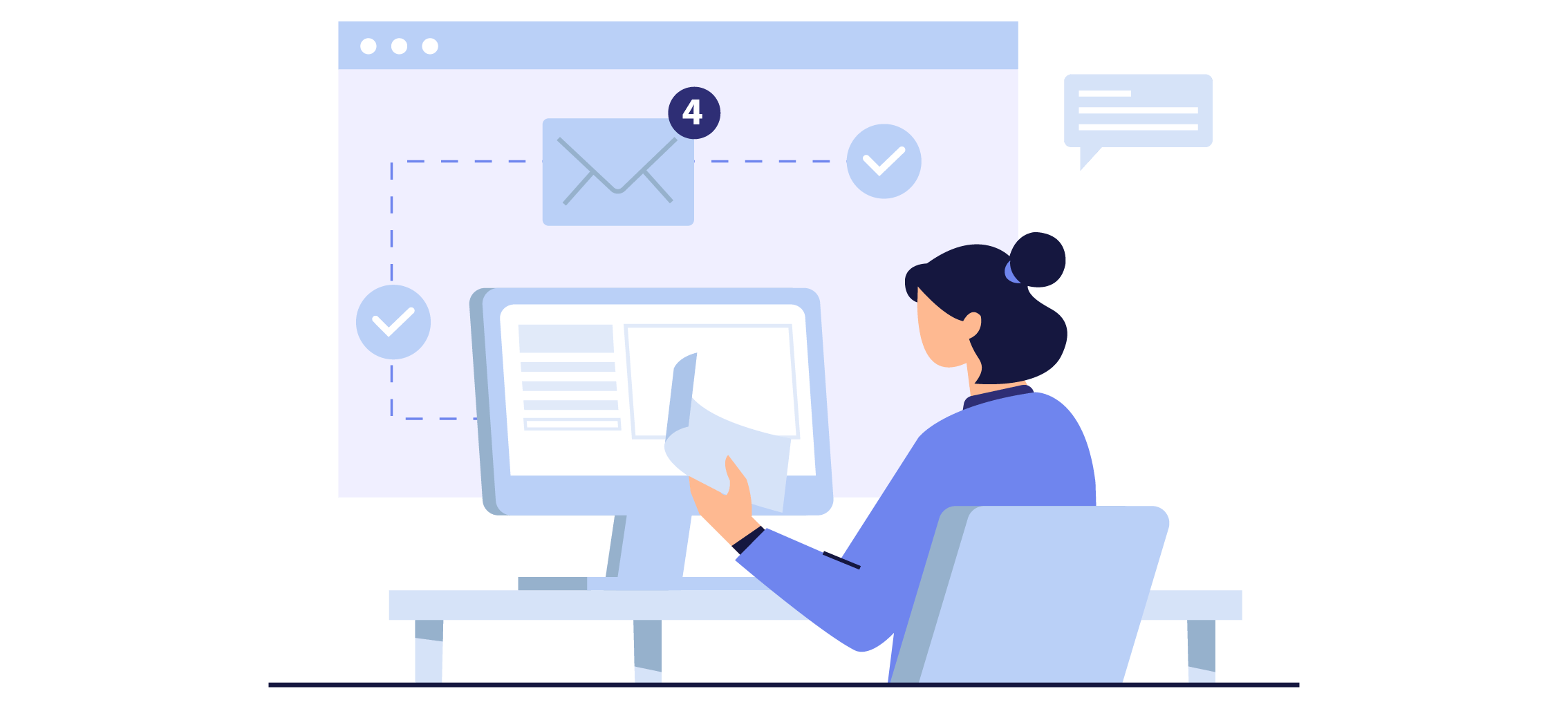Let’s talk about something we all know is essential for any business looking to convert potential customers into paying clients: following up with leads.
Email has emerged as a go-to tool for communicating with leads, and crafting that perfect follow-up email is far from just taking a shot in the dark. When done right, follow-up emails can significantly increase your chances of closing deals.
Studies have shown that following up with multiple emails can increase the odds of closing a deal by as much as 25%. Following up fast is also crucial, with 50% of buyers going with the business that replies first.
Crafting the perfect lead follow-up email can seem daunting, but with the right tips, tricks, and templates, you can make it a seamless and fruitful process.
So let us light the way with our guide to creating impactful follow-up emails.
Understand Your Audience and Personalize Your Approach
To craft an effective lead follow-up email, it’s essential to understand your audience and personalize your approach.
Consider factors such as their pain points, industry, and job title to tailor your messaging. Personalization can significantly improve your chances of getting a response and converting the lead.
Our tip: Use merge tags in your email templates to automatically insert personalized information, such as the recipient’s name or company, to create a customized experience.

Keep it Short and Focused
A well-crafted follow-up email should be concise and to the point. Your leads are busy professionals, and they’re likely to appreciate a clear, focused message that addresses their needs.
A lengthy email might deter your recipient from reading it or taking action, while a brief, well-structured email can efficiently convey your message and increase the chances of a response.
Our tip: Aim for no more than three to four paragraphs, and make sure to include a clear call-to-action (CTA) that encourages the lead to take the next step.
For example, if your goal is to schedule a product demo, your CTA could be “Schedule your personalized demo now” and include a link to a calendar booking tool.
This straightforward CTA helps guide the lead to take the desired action, making it easier for both parties to move forward in the sales process.
Craft an Engaging Subject Line
An enticing subject line is critical for getting your follow-up email opened.
Make sure it’s relevant to the recipient and piques their interest. A captivating subject line can be the difference between your email being opened and read or being sent straight to deleted items.
Try using questions, numbers, or personalized elements in your subject lines to grab the reader’s attention and encourage them to open the email.
Our tip: You’ll want to avoid any language that might trip spam detectors and land your email in the dreaded spam folder. It’s also important that your follow-up emails comply with any regulations.
Keep your subject lines clear and professionally formatted by avoiding excessive punctuation or capitalization, which can appear overly aggressive and trigger spam filters. Instead, use a subject line such as:
“A Quick Update on Your Inquiry, [First Name].”
Since this is a follow-up email, referencing the previous interaction makes the subject line more relevant and engaging. For instance, you could use:
“Following up on our call, [First Name]: Next steps.”
By crafting engaging, friendly, and relevant subject lines while avoiding language that triggers spam filters, you’ll ensure your follow-up emails land in the recipient’s inbox, right where they belong.
Include Social Testimonials
Including social proof, such as testimonials or case studies, can be a game-changer when it comes to building trust and credibility in your follow-up emails.
By sharing success stories from satisfied clients that are relevant to the lead’s industry or situation, you demonstrate the value and effectiveness of your product or service in real-world scenarios.
Our tip: Use quotes, images, or videos to present the social proof in a compelling and engaging way.
Remember, people tend to trust the opinions and experiences of their peers – so featuring social proof in your follow-up emails can significantly impact your lead’s decision-making process.
Templates to Get You Started
Now that we’ve armed you with some fantastic tips for crafting engaging follow-up emails, it’s time to put them into practice!
To help you kick-start the process, we’re sharing two templates you can use as a foundation for creating your own personalized follow-up emails.
Template 1: The Personalized Check-In
Subject: [First Name], how can we help [Company] grow?
Hi [First Name],
I hope you’re doing well. I noticed that you recently downloaded our [eBook/White Paper/Guide] on [Topic]. I wanted to check in and see if you have any questions or if there’s anything else we can help with.
At [Your Company], we’ve helped businesses like [Client’s Company] achieve [Specific Result] by implementing our [Product/Service]. You can read their success story here: [Case Study Link].
If you’re interested in exploring how our [Product/Service] can help [Company] grow, I’d be happy to schedule a call. Just let me know when you’re available, and we can set up a time that works for both of us.
Looking forward to hearing from you, [First Name].
Best regards, [Your Name]

Template 2: The Value Add
Subject: [First Name], a resource to help you with [Pain Point]
Hi [First Name],
I hope you found our recent [Webinar/Article/Event] on [Topic] helpful. Since you expressed interest in [Pain Point], I thought I’d share this additional resource with you: [Link to Resource].
This [Resource Type] dives deeper into [Topic] and provides actionable insights on how to [Solve Pain Point]. Many of our clients, like [Client’s Company], have seen significant improvements after implementing these strategies.
If you have any questions about the resource or would like to discuss how our [Product/Service] can help [Company] overcome [Pain Point], please don’t hesitate to reach out. You can book a call with me here: [Calendar Link].
Best regards, [Your Name]
You’ll see that these templates cleverly weave in the key points we’ve covered throughout this guide, making your follow-up emails even more powerful.
But hey, we’re not stopping there! If you’re craving more inspiration and variety, we’ve got you covered with an array of even more great lead follow-up templates.
Timing is Everything – Make It Count
Finding the perfect moment to send your follow-up email is absolutely critical and ideally, you should aim to send your email within 24-48 hours of the initial contact.
This strategy ensures that your brand remains top-of-mind while the lead’s interest is still fresh and ripe for engagement.
But how do you make sure your follow-up emails always hit that sweet spot in terms of timing?
The answer lies in automating your follow-up sequences.
Using auto-dialing platforms can work wonders for the consistency and effectiveness of your lead follow-up emails.
Not only can you schedule and send emails and SMS at the optimal time, but you can also create a series of timely, personalized messages that cater to your leads’ specific needs and actions.
Automation software allows you to set up and manage follow-up sequences with ease. By using triggers and rules, you can ensure that your follow-up messages are not only sent at the right time but are also tailored to your leads’ behavior and preferences.
Wrapping It Up
Crafting the perfect lead follow-up email involves a blend of impactful content, engaging subject lines, and impeccable timing.
By incorporating the tips, tricks, and templates discussed in this article, you’ll be well on your way to creating follow-up emails that truly resonate with your leads. And with the help of automated lead callers, you can streamline your follow-up process, ensuring consistent, personalized communication that drives results.
Why not take the next step and explore our platform to supercharge your follow-up strategy?

